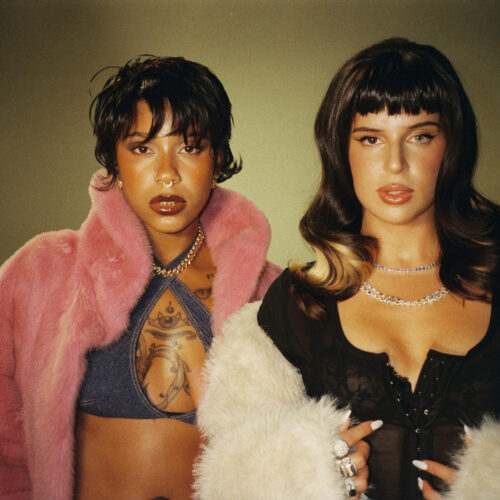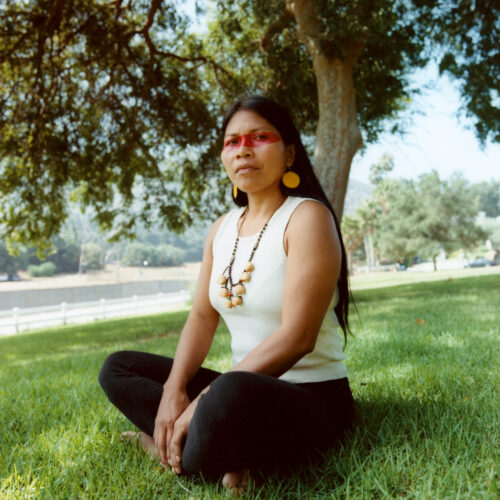Leer en español
Guadalajara’s culture has always formed its great masters and artistic movements without the need to seek fame outside of Jalisco or emulate the art scene of Mexico City. During the twentieth century a tight-knit design community established the Jalisciense capital’s reputation as a domestic and international destination for artists and designers.
Beginning in the late 1940s, the Modernism movement gained strength in Guadalajara, the second-largest city in Mexico, with the founding of the School of Architecture in 1948 by Ignacio Díaz Morales. During the school’s initial years, European immigrants including German photographer Marianne Gast and her husband Mathias Goeritz mentored students, and taught the Bauhaus method, the “Vorkurs,” a preliminary course focused on “learning by doing.” This pedagogy was compelling for local artists and creators and sustained Modernism’s thriving momentum in the Mexican city for the following decades, although local figures at the forefront of Jalisco’s Modernist architecture preceded this period, such as Pedro Castellanos Lambley and Julio de la Peña Lomelín.
Within the art scene, the establishment of art collectives in the ‘90s like Guillermo Santamarina’s Corpus Callosum gave rise to a potent search for community and camaraderie within Guadalajara. When artists from Mexico City began exhibiting in Paris, los Jaliscienses were fine at home, continuing their practice and perfecting their technique. On the other hand, throughout the ‘90s prominent New York galleries attended contemporary art fairs in Guadalajara, such as the cutting-edge fair Expoarte, in search of new talent.
Today, Guadalajara continues to vibrate with a scene of creators that follows its rhythm and its genre, whether in textile art, sculpture, ceramics, jewelry, or furniture. This was palpable in the second edition of Salón Cosa, a “gathering of contemporary objects” made up of thirteen creators living and working in Guadalajara which took place from Oct. 27–31, 2021
“[These creatives] will open our vision to new horizons, to a free and exceptional territory. A territory whose deeply traditional roots are now reinvented,” said the show’s curators Mario Ballesteros and Daniela Elbahara.
After the success of the first Salón, which took place in May 2021 in the former model workshop of the Luis Barragán House and Studio in Mexico City, Salón Cosa GDL set up shop on the ninth floor of the Bellwort Hotel — formerly Edificio Rosales, designed by de la Peña Lomelín in 1967.
View this post on Instagram
Among the creatives was Aldo Álvarez Tostado, who for the second time showed “Escena de Potrero.” In a kind of provocation, Álvarez Tostado returns Barragán’s spirit to his much more conservative place of origin with a pair of belts and a saddle engraved with phrases taken from the Grindr dating app. The equestrian work alludes to the tension between machismo and queerness, especially around the life and work of the architect Barragán.
Following along these provocative lines is the work of Renata Petersen, who works with hand-painted ceramics expressing female desire and who on this occasion presented “This Dick Ain’t Free,” a text in fused glass.
View this post on Instagram
Ballesteros and Elbahara propose a new art exhibition format that is inclusive, accessible, and open to dialogue, one mixing “complexity and contradiction, high with low, business with pleasure, sense and shock, celebration and community-creation.” Utilitarian items or collectible designs, including the colored tripod lamps by Marcelo Suro or the hand and wall mirrors by Alejandro García-Contreras, are examples that range from the minimal to the peculiar and eccentric.
While some experimented with new scales and proportions, like the textile designers Julia and Renata Franco with their “Mosquito Net Dress” towering in the center of the room, others like Ricardo Luévanos, transformed their art for the first time into a utilitarian object. His 3D-printed and hand-painted “It Felt Like Crashing Into the Sun” pendant lamp, is a continuation of his understanding of human and animal anatomy.
View this post on Instagram
Antonio Zaragoza and Kenia Filippini from Liberal Youth Ministry (LYM) who are possibly the most important designers in the luxury streetwear scene worldwide, designed a backpack printed in 3D and painted by hand with 13,000 Swarovski crystals applied by hand. While the upholstered wool benches designed by Peca Studio and the breast-like “Biznaga” vessels by Chamula Hecho a Mano, as well as their blue wardrobe, “Tritón” — in collaboration with Pablo Pajarito and Antonio Medrano — were another example of Guadalajara’s creative expression, one that will not be slowing down anytime soon.
The third iteration is already on its way and is set to open during Art Week in Feb. 2022 in CDMX.









